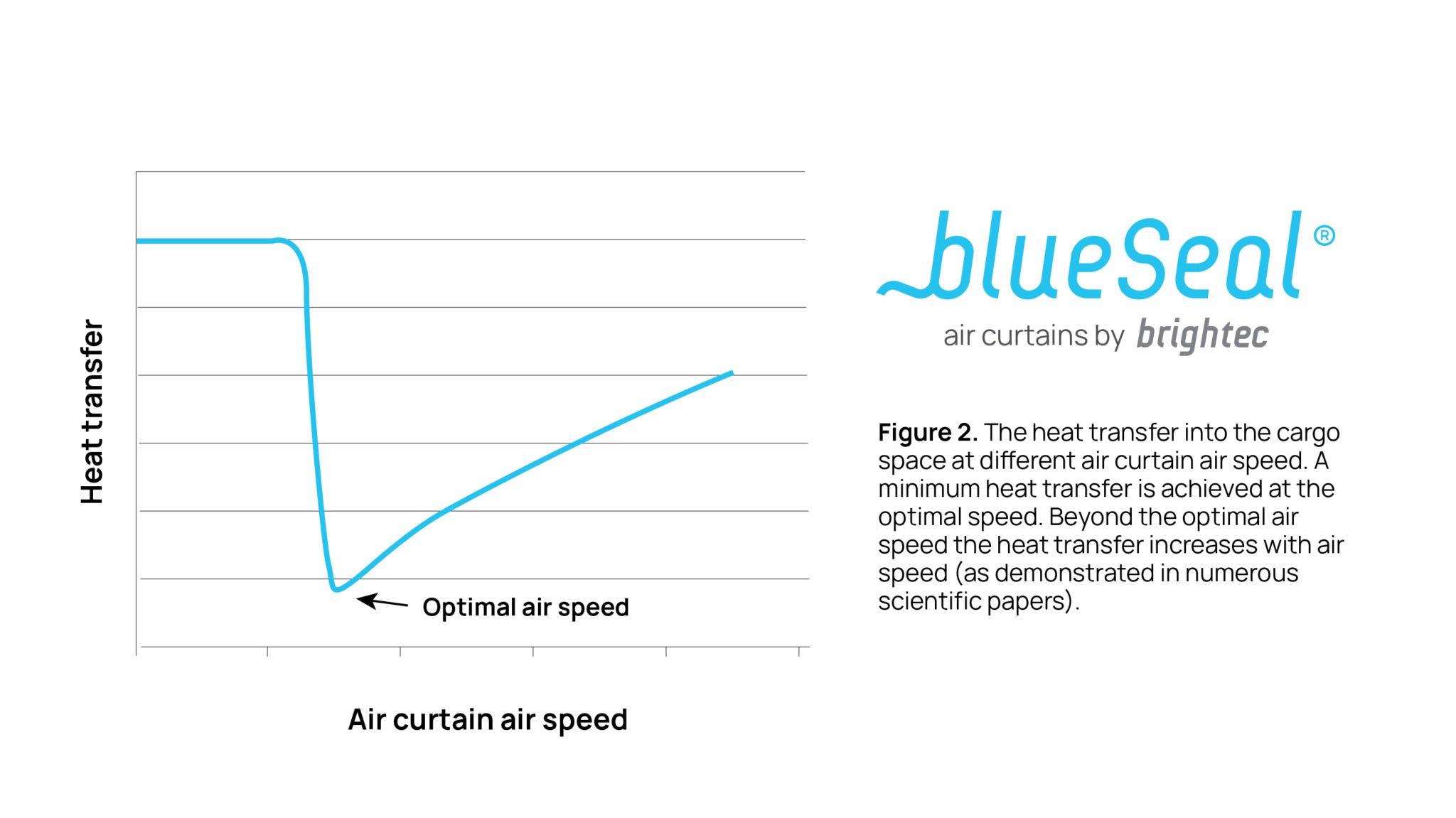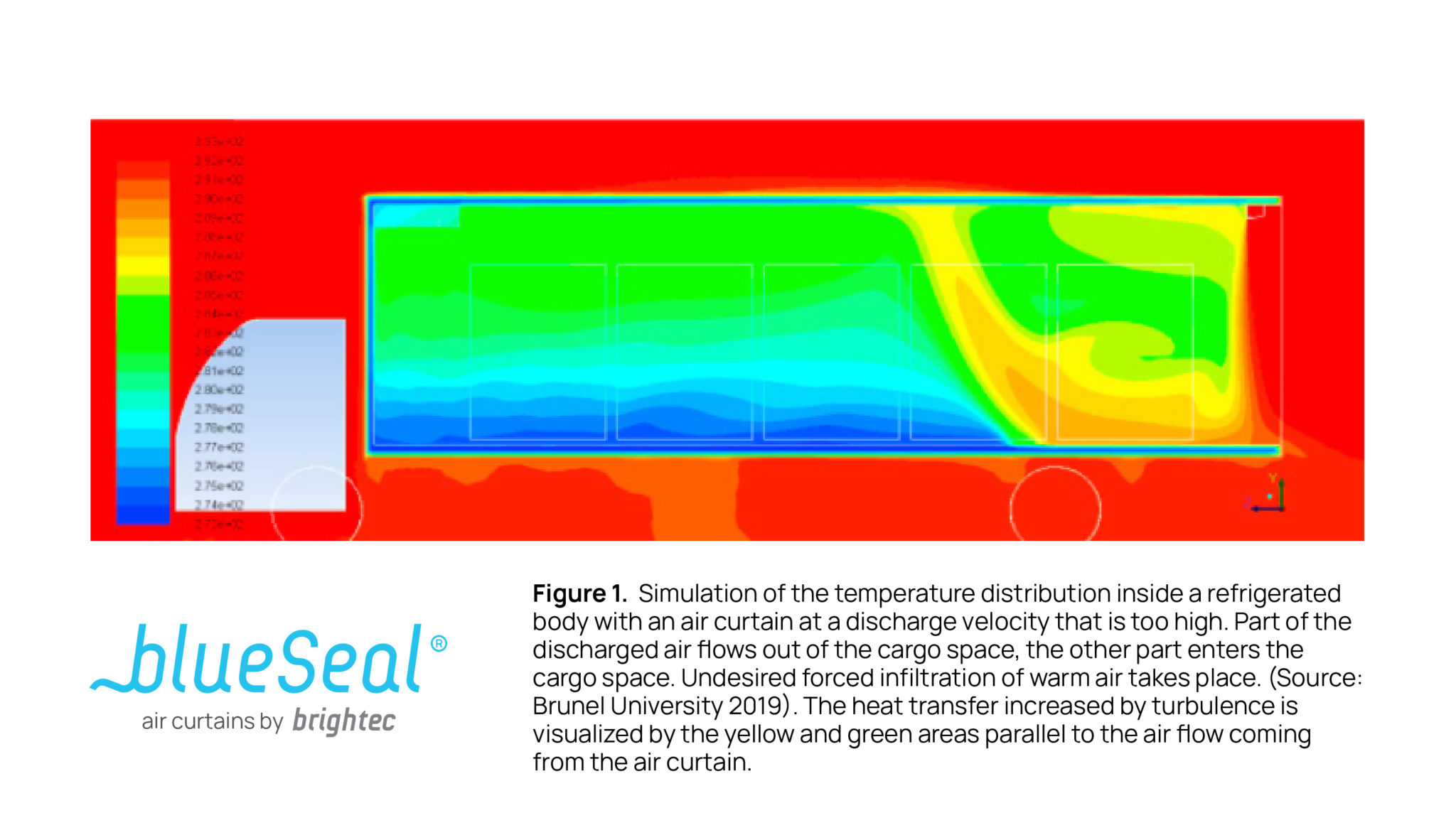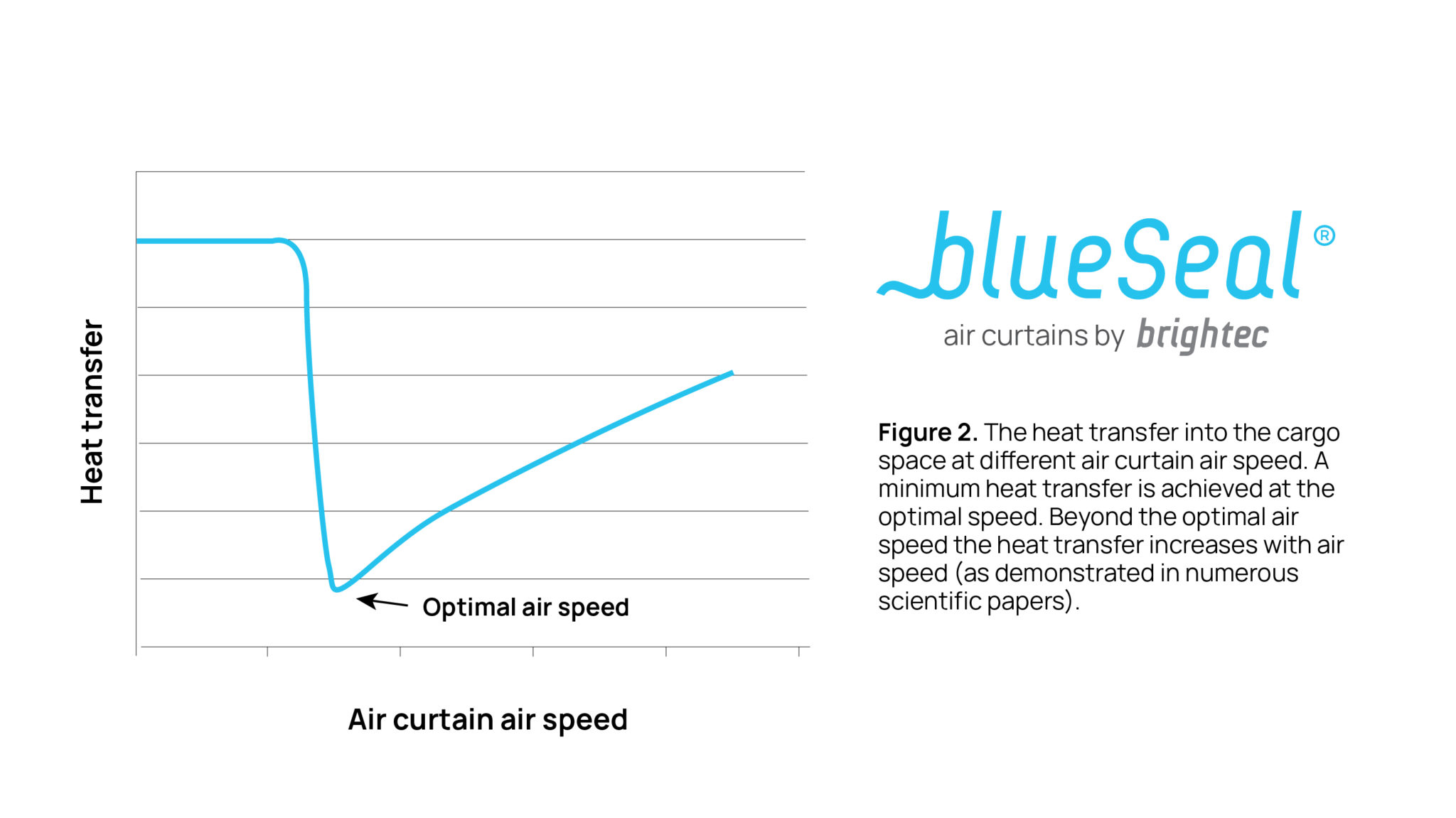
Optimal Air Curtain Airflow for Refrigerated Transport: Why Higher Air Speeds Can Reduce Performance
Creating the most effective climate barrier for refrigerated transport requires a deeper understanding of airflow physics than many assume. The concept of optimal air curtain airflow for refrigerated transport is often misunderstood – with some believing that simply increasing the speed of the air stream will automatically improve performance. In reality, air speeds that are too high can be counterproductive, reducing the effectiveness of the climate barrier and increasing energy loss.
The Science Behind Optimal Air Curtain Airflow for Refrigerated Transport
Brightec, founded by physicists in 2006, has conducted extensive research to create an airflow system that operates at peak efficiency. Since launching BlueSeal in 2010, multiple independent tests have confirmed the performance advantages of our optimised air curtain design.
So why doesn’t stronger airflow mean a better barrier?
How Excessive Air Speed Reduces Climate Barrier Effectiveness
- Turbulence and Forced Convection – At high speeds, the air stream draws in more surrounding air, creating turbulence that mixes warm outside air with cold inside air. This accelerates heat transfer into the cargo space, causing greater temperature loss.
- Floor Impact and Airflow Split – When a high-speed air stream hits the floor, it splits in two directions – towards the cargo space and outwards. This allows warm, humid air to infiltrate the cargo area (see Figure 1). An optimal air curtain airflow for refrigerated transport must strike a balance to keep warm air out while maintaining an effective seal.
Finding the Optimal Air Curtain Airflow for Refrigerated Transport
Experimental data from Brightec tests, as well as research conducted by Brunel University in London, shows that there is a clear optimum air speed. Beyond this rate, performance drops significantly. The ideal speed is influenced by factors such as the temperature difference between the cargo space and the ambient environment.
By calibrating to this optimal level, BlueSeal ensures that its air curtain for refrigerated transport maintains temperature control more effectively, reducing the load on cooling equipment and preserving goods for longer during delivery routes.
Conclusion: Airflow Optimisation is Key to Energy Efficiency
Air speeds that are too high are counterproductive to effective climate control in refrigerated vehicles. By using the optimal air curtain airflow for refrigerated transport, operators can significantly improve temperature retention, reduce energy consumption, and protect product quality.
If you are unsure about the most effective air curtain settings for your fleet, contact Brightec for tailored advice on maintaining ideal conditions for your cargo.


For more information on BlueSeal air curtains, please contact our Brightec consultants at [email protected]